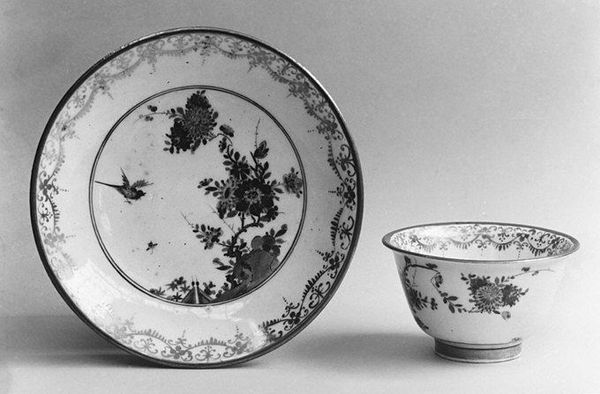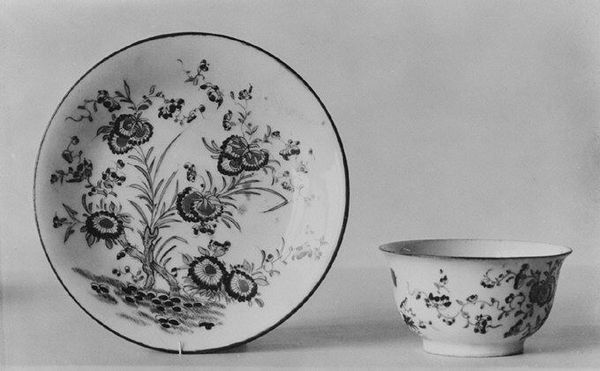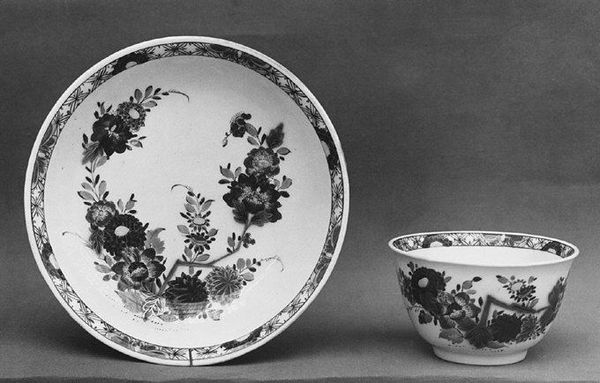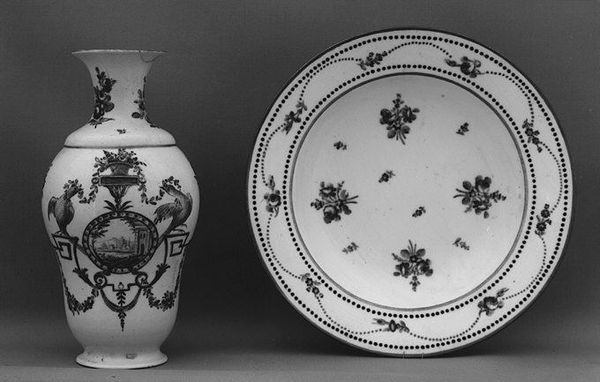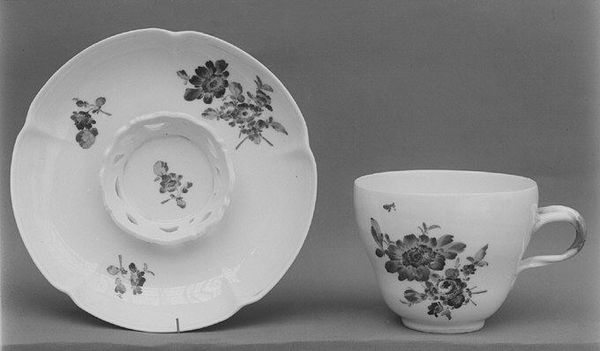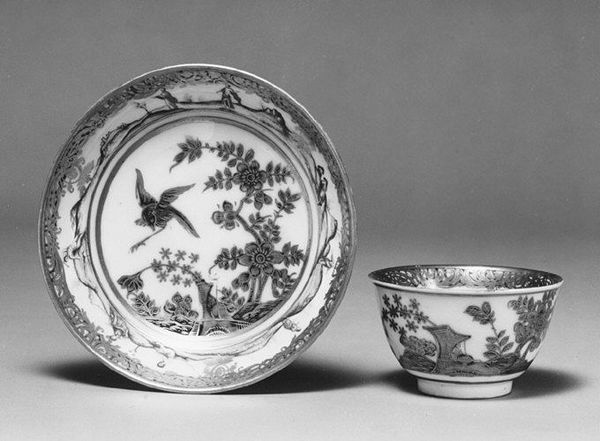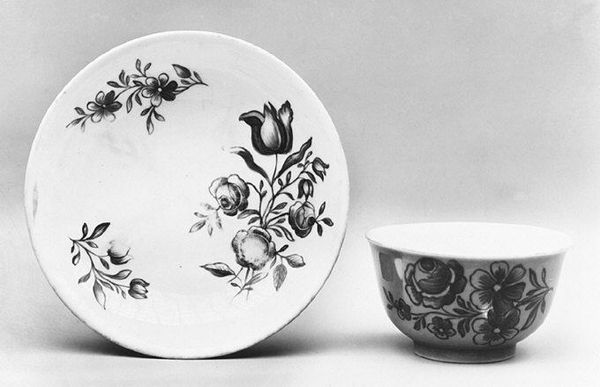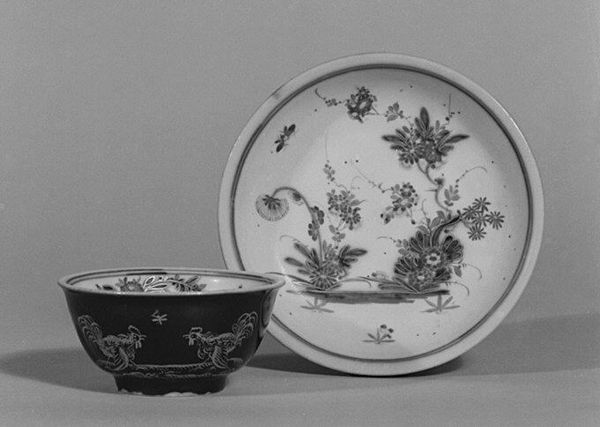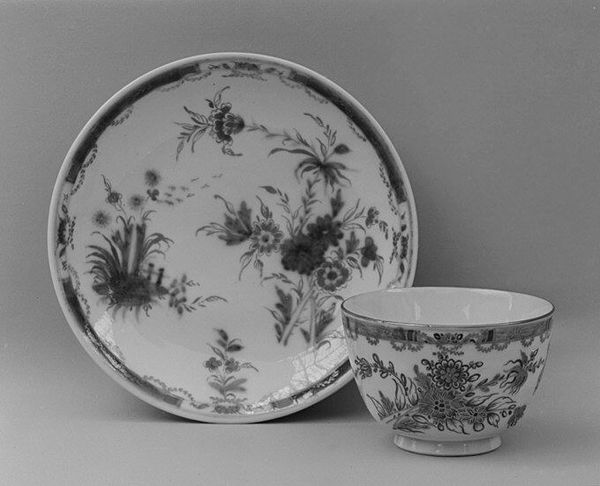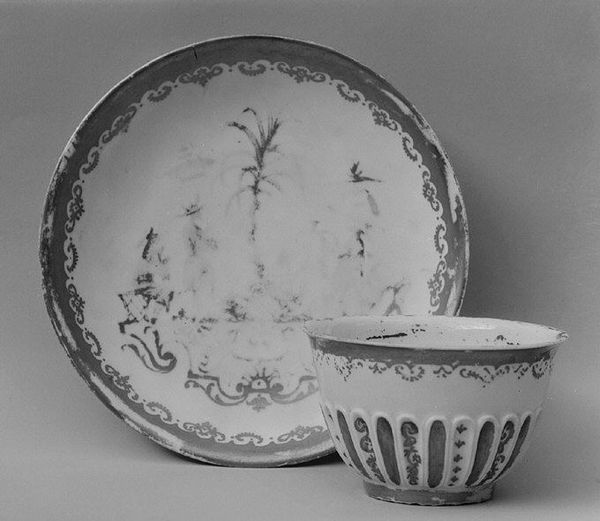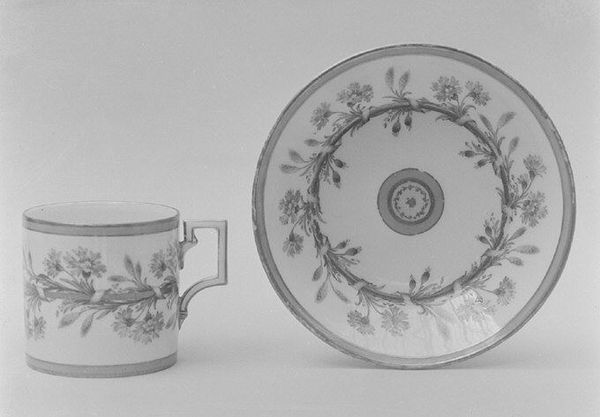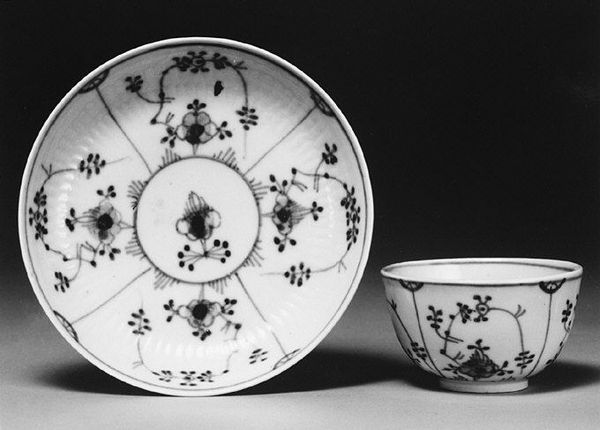
Dimensions: Height: 1 7/8 in. (4.8 cm)
Copyright: Public Domain
Curator: Standing before us is a porcelain cup and saucer, created by the Meissen Manufactory between 1774 and 1814. They represent a fascinating moment in decorative arts, here on display at the Metropolitan Museum of Art. Editor: It has a surprisingly austere beauty for a decorative object. Despite the floral motifs, the monochrome palette and fine lines impart a subdued, almost melancholy air. Curator: Yes, well, it reflects the Rococo style’s transition towards Neoclassicism. While flowers were ever-present, there’s a new emphasis on delicacy over flamboyant opulence. It's a period of reflection in art generally. Editor: I’m struck by how such commonplace objects become vessels, if you will, for projecting social aspirations. A cup becomes much more than something you drink from. It’s an enactment of social performance, even a type of ritual. Curator: Absolutely. Porcelain, developed originally in China, had this aura of exoticism, but when Meissen mastered its production in Europe, it became linked with status and refined taste, and in ways changed social life, tea rituals, that then became central. Editor: I imagine owning this tableware would signal belonging to an elite social class, with an appreciation for beauty, craftsmanship, and even international trade relations. Curator: Certainly. And even further: these weren't mere mass-produced items. The artistry invested in the hand-painted floral decorations elevated their status, demonstrating that functional objects could also be high art. Editor: The continuous reinvention of symbolism and objects fascinates me, from flowers representing seasons or emotions to fine china implying status, even these quotidian things carry layered cultural meanings. Curator: For me, this cup and saucer speak to how institutions – like the Meissen Manufactory – molded artistic expression. By observing their works, we grasp the aspirations and assumptions of the societies that fostered them. Editor: In the end, both utilitarian design and decorative elements blend, echoing social stratification but now offering a portal through which to observe the ever-shifting meanings we assign to our material world.
Comments
No comments
Be the first to comment and join the conversation on the ultimate creative platform.
